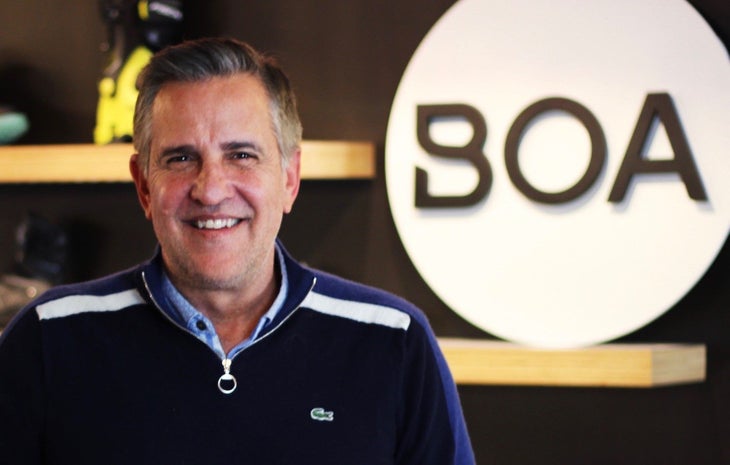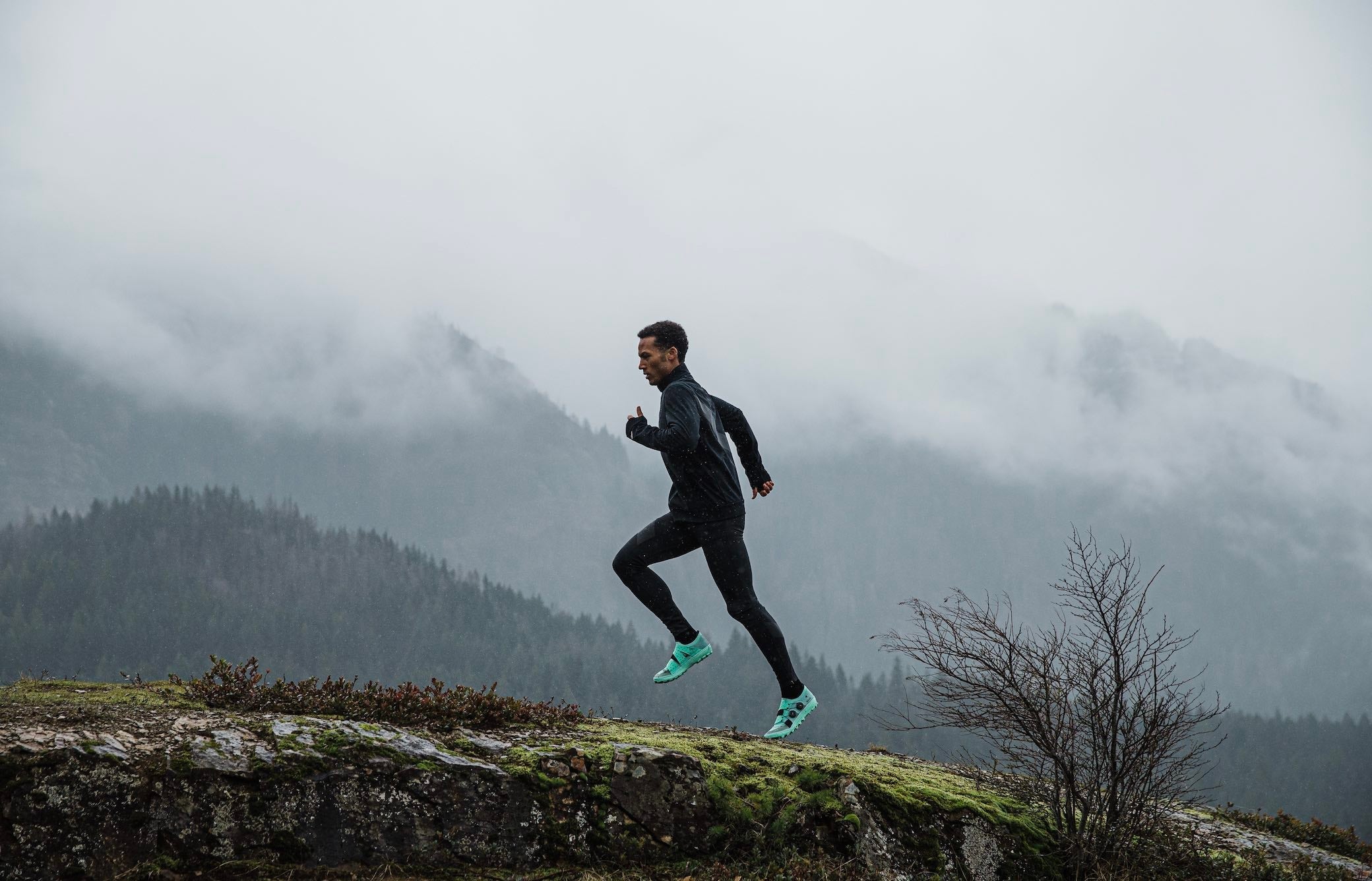The past year has been transformative for Boa Technology Inc.—and not just because 2021 marks the company’s 20th anniversary of designing and making patented dial fit systems for outdoor gear and other products.
In the last 12 months, Boa settled into its new ownership under Compass Diversified, the publicly traded holding company that acquired the brand in October 2020 for $454 million. It’s also welcomed new talent and unveiled new products. Even its spacious Denver headquarters, which Boa occupied in 2018, still has that new-building look and feel.
But for a brand that is seeing rapid growth each quarter—Boa’s sales spiked more than 50 percent to $39.5 million in the recently completed Q3—one of the first comments that CEO Shawn Neville offered during a recent interview with OBJ came as a surprise.

“We have fewer brand partners today than five years ago—and that’s on purpose,” he told us. “We wanted to make sure we had the right folks to grow with us. As we curated the brands we work with, our business has almost tripled in five years with fewer partners.”
Despite all the changes happening at Boa—a new owner; growing revenue with fewer partners; celebrating its 20th anniversary—the same principle has guided the company since its founding in 2001.
Boa remains focused on innovation. That ideal can be seen and felt in Boa’s dial systems whether they’re on a snowboard boot, bike helmet, trail running shoe, medical device, or an alpine ski boot—one of the innovations that Boa will unveil in a couple of seasons.
With so much happening at Boa these days, notably its 20th anniversary and first year being owned by CODI, we wanted to check in with Neville about the brand’s latest happenings. Here’s what he shared:
As you reflect on Boa’s journey over the last 20 years, what stands out for you? What are some of the drivers of the company’s success?
I usually break it into three parts. First, it always starts with the origins and the company’s founder, Gary [Hammerslag], and an ongoing commitment to talent. The vibe and the passion here have remained the same as the company has grown and evolved. Second is our absolute commitment to disruptive innovation. We’re doing that by building deep partnerships with brand partners. The last thing is the company has scaled purposely. As the business has grown considerably, we ask ourselves if we’re building the infrastructure of excellence so that operationally we connect around the world with people that come from different backgrounds and cultures, while creating the evolution of Boa. That aspect is allowing us to scale the company effectively—all while doing that more sustainably.
It’s been a year since Compass Diversified acquired Boa; can you take us behind the company’s (and its investors’) decision to sell? Why was CODI the right fit?
A couple of years back, we had a board meeting in Austria where I spoke with our existing shareholders. The majority shareholder had already been in the investment for seven years. They loved the business and probably could’ve stayed in it a long time. But we decided that maybe it was time to get another partner—not that we needed the cash but it just seemed like a nice inflection point so we went through the sale process. We were looking for an investor that wasn’t looking to shake things up but was willing to understand and partner with us as we continued to evolve. We found Compass, and they clearly emerged as the best potential partner for a couple of reasons. One is they know the space and they’ve also had successful investments in the outdoor industry. Two, they operate as partners, not managers. From my vantage point, I feel very fortunate to have them, and so does our team.
How has CODI been as a parent company? What resources and synergies have you seen now that Boa is part of its growing portfolio?
Compass has a unique business model. They are a public company, but they operate their businesses like a private equity business. Boa is an independent entity with its own shareholder base. Compass is a majority shareholder, but we’re not an operating division, so it’s been very different than, say, a pure acquisition. Compass is the majority investor in Boa. I’m a large investor in the brand as well, but I’m also invested in Compass because I believe in them. If they integrated too much of the back office, it would create extraction challenges when it came time to sell the company. The biggest benefit is, first and foremost, the capital structure. They can invest and borrow money at a collective rate lower than most private equity companies, and they pass along those benefits when debt is put on the balance sheet. They’re also very nimble around the use of capital. They’re not trying to create an operating company. They’re a holding company with strategic, thoughtful support as opposed to getting too engaged.
What’s the biggest difference (or biggest differences) between being owned and operated by a PE firm versus a publicly traded company?
I’ve been lucky enough to run both public and private companies. I’ve always tried to lead my team as if we are transparent: we have long-term plans, we have short-term expectations, and we are measured against both. There wasn’t much change after the acquisition. There’s a bit more pressure on our finance team in terms of requirements, but it’s not changed the way we operate. If you have a clear long-term plan, and you believe in it, and you’re resourcing against it, and you’re committed to it, and you understand the gyrations of the business, you will never be led by short-term expectations.
How did COVID impact Boa beyond delaying the acquisition?
I always enjoyed the comment “never waste a crisis.” Our team had a meeting where we said, “Many things are important; we need to make sure we understand what’s critical. And if we stay focused on that, we don’t know what’s going to happen in the short term, but we’ll be in better shape in the future.” We agreed that financial security and the safety of our people was paramount, and we ensured that we didn’t cut investments in long-term innovation. Of course, we made slight adjustments as others did just because of the fluctuation of business, and I think as a result of that, it allowed us to come through with the organization more energized.
Any particular headwinds or tailwinds that stunted or propelled the company in recent months?
We produce our goods and our partners consolidate them in Hong Kong, and then ship them out to factory partners. We’ve had supply chain restraints, but we’ve been fortunate enough not to have to pass on too many delays to our partners. All things considered, we’ve been able to manage through it. Our brand partners have had more challenges trying to fill shelves, factories are still challenged in Vietnam, and there are freight challenges. But I would say we’ve come through COVID a stronger company. And the industry, I believe, is also better-positioned for the future. I’m proud of the team and fortunate to be in an industry that wants more people outdoors.
Who or what do you see as the biggest threat to Boa’s success? What keeps you up at night?
I always look at threats through the eyes of opportunity. Success sometimes breeds too many conversations about threats, which sometimes creates protection. There are always threats, but the question is how do we convert those into opportunity. The biggest threats are internal: not continuing to invest in a more diverse organization, not committing to sustainability, not building out our capabilities, not working to be the flagship brand for our partners. We still want to be disruptive and innovative ten, 15, 20 years from now.
What’s next for Boa?
Our future is about how the consumer performs in our product. Through our Performance Fit Lab, we’re constantly working to be a leader in big data, material science, and the application of our system. We are maniacally focused on improving human performance through fit, and the application of Boa and materials to make it better—all while proving it scientifically. And if we live from that, and also build our brand because we now started consumer marketing around the dialed-in mindset, we believe we can have a powerful and beautiful brand that also works incredibly well in concert with all of our great partners.


